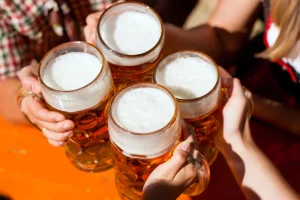
Stress is a trigger for many addictive behaviors, so you want to ensure you are getting enough sleep every night. Typically, a crisis moment brings some clarity and a resolve not to use the substance again. A period of abstinence follows until the individual encounters a trigger, and a craving for the substance overwhelms them.
How the Cycle of Addiction Keeps You Trapped — and How to Escape
Some of these illicit substances can also lead to tolerance within one or two uses. Nevertheless, in most cases, all these steps are part of the chronic cycle of addiction. Rather than assessing their support structures, individuals often seek rapid relief. However, if they choose a different direction, leaving the addiction cycle can become achievable. The first step in stopping this cycle would involve help from family, cycle of addiction friends, professors, therapy groups, and other support systems.

Aftercare and Support Systems

Navigating this path requires courage, support, and an understanding of the processes involved in breaking free from addiction’s hold. Recovery Connection is the ultimate addiction recovery resource portal for information on the latest treatments, centers, and programs. Whether you’re looking for treatment or for aftercare options, we can point you in the right direction. Unfortunately, relapse can occur during the action or maintenance stage, which means the addict or alcoholic again enters the cycle of addiction. Effective treatment often involves a combination of behavioral therapies, counseling, and medication management.
- The first thing you want to do is to recognize that addiction is a disease that requires decisive action.
- You might leave the theater feeling frustrated, uncomfortable, and disappointed in yourself—but you shouldn’t.
- This idea can lead to a belief that a person who is struggling with a substance or alcohol addiction may have had one drink or tried an illicit drug one time and immediately became addicted.
- For example, the treatment milieu may have been counterproductive to sobriety if there were toxic individuals.
- Understanding this cycle is crucial for those struggling with addiction, their loved ones, and healthcare professionals working to combat this pervasive issue.
What are the five addiction stages?
Understanding these phases helps frame the recovery process, providing a sense of progression and milestones to work towards. While the journey is challenging, each step forward is a move towards a healthier, more fulfilling life free from the constraints of addiction. Various triggers can lead to relapse, including stress, exposure to the substance or related environments, or mental health disorders. Understanding, anticipating, and planning for these triggers is a crucial part of the recovery process. amphetamine addiction treatment Detoxification is the first step in the journey to recovery, focusing on clearing the body of substances.
Dopamine addiction can make people feel restless or bored when they’re not engaged in highly stimulating activities. Everyday tasks like reading a book, spending quiet time, or even having a simple conversation might feel dull or unappealing. Instead, they might constantly seek activities that provide an immediate dopamine boost, like scrolling on social media, binge-watching shows, or playing video games.
- Recovery means learning how to spot and manage those triggers early.
- Dual diagnosis treatment addresses both issues simultaneously, providing a comprehensive approach to recovery.
- In this blog post, we’ll define dopamine addiction, how it impacts recovery and mental health, and what you can do to break the cycle.
- At this point, the individual may feel powerless to stop, even as negative consequences begin to pile up.
- To avoid having to confront those problems or unpleasant emotions, they often end up drinking or using more, which only worsens the situation, and the cycle continues.